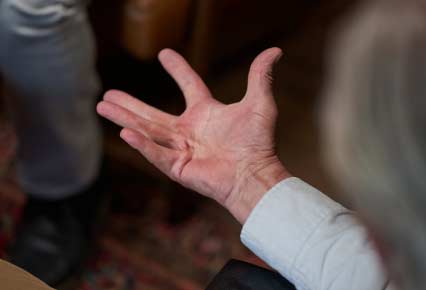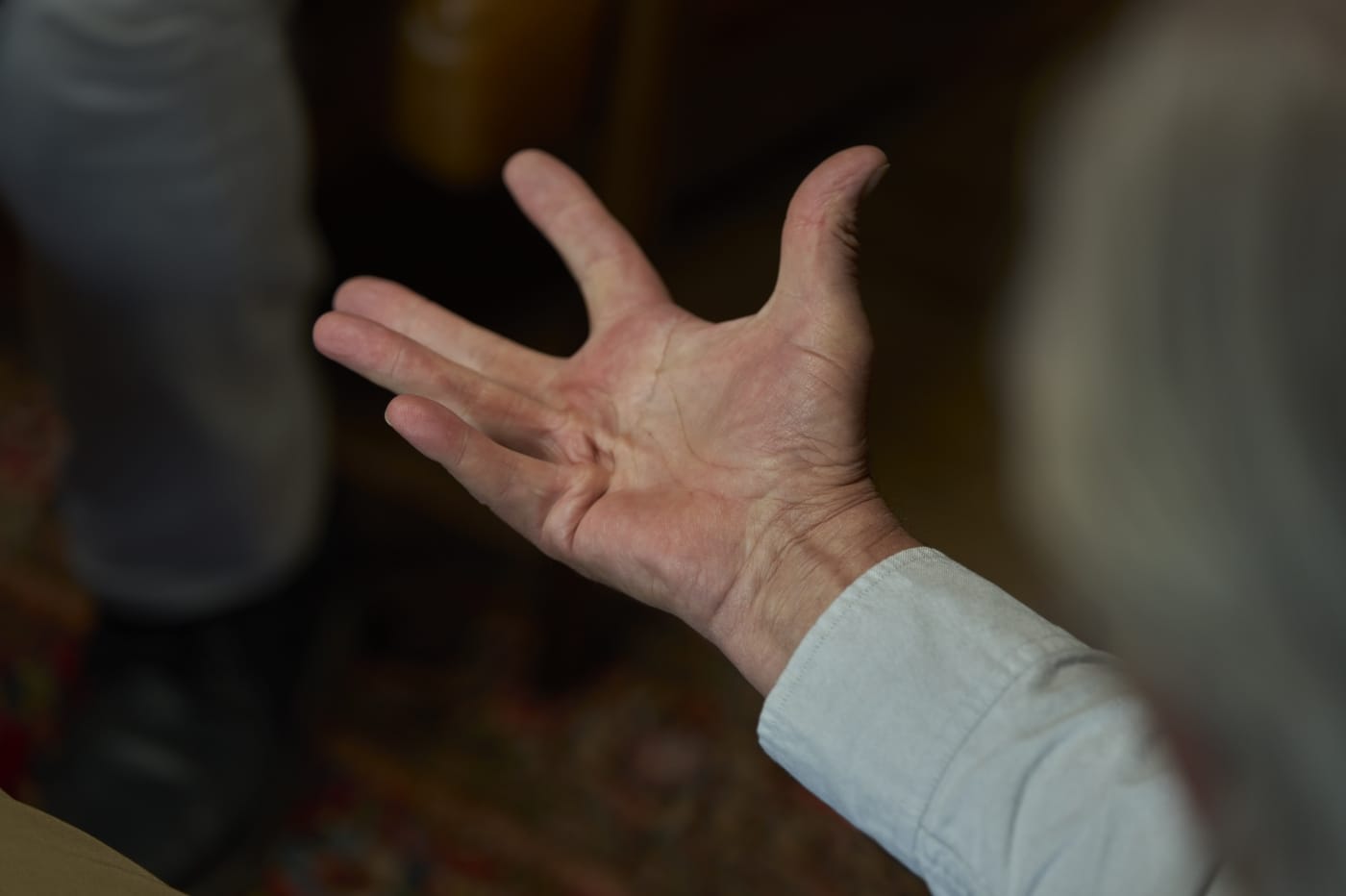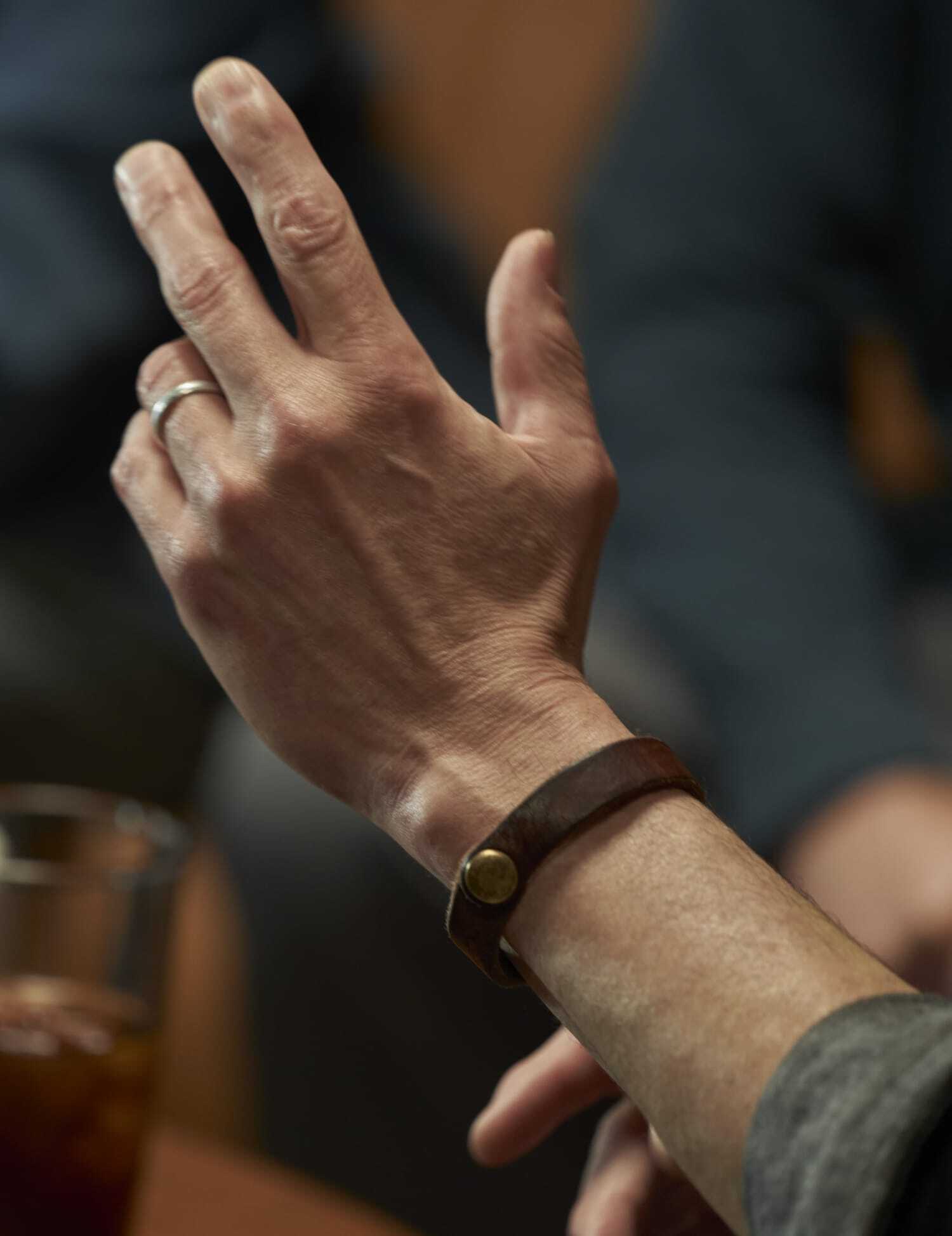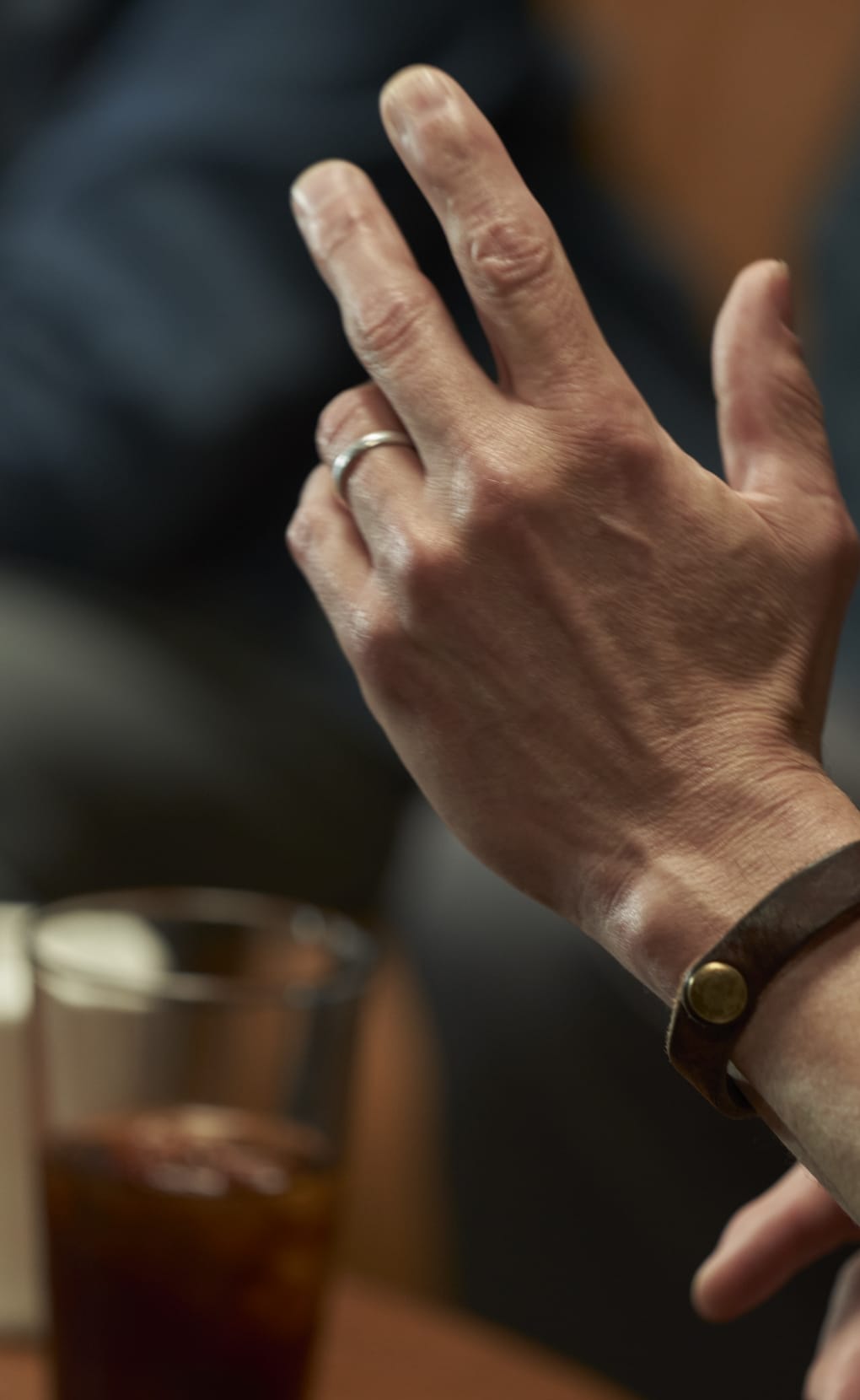Actual patients
compensated for their time.
-
What is Dupuytren’s contracture?
Dupuytren’s contracture is a hand condition that can occur in one or both hands. Dupuytren’s contracture is caused by a buildup of collagen that forms a rope-like cord beneath the skin of the palm. As a progressive condition, it may worsen over time and may eventually limit your ability to move or straighten your fingers.
Find a Hand Specialist trained in XIAFLEX
WATCH MORE VIDEOS -








What is the cord made of?
The short answer: collagen.
Collagen is a protein with a fiber-like structure that is found in connective tissue.
The longer answer: Dupuytren’s is a disease that causes a buildup of collagen beneath the surface of the skin of the hand. It may start to form a nodule that appears as a lump below the skin or a dimpling of the skin called pitting.*
As the collagen thickens, it can develop into a rope-like cord that extends from the palm to the finger. The tightening of the cord can make fingers bend inward toward the palm, which, over time, can potentially limit how a person moves or straightens their fingers.
-
What are the symptoms of Dupuytren’s contracture?

Not being able to lay your hand flat

A rope-like cord that extends from the palm to the finger

The inability to move or straighten your fingers

Difficulty doing daily tasks such as gripping a mug, washing your face, brushing your hair, or shaking hands because of a contracted finger or fingers
-
Can I have contractures in multiple fingers?
Yes, Dupuytren’s contracture most commonly affects the ring and pinky fingers, though it can affect any finger or multiple fingers on one or both hands.
It also most commonly affects:
- The joint at the base of the finger called the MP joint
- The joint at the middle of the finger called the PIP joint
MP=metacarpophalangeal; PIP=proximal interphalangeal.
-
Who is at risk for Dupuytren’s contracture?
While anyone can have Dupuytren’s contracture and the exact cause is unknown, some people are more likely to develop it than others. Some risk factors include:
Risk Factor 1
Age—More common in people over 40
Risk Factor 2
Gender—More likely to occur in men
Risk Factor 3
Family History—Often runs in families
Risk Factor 4
Family Background—More common in people with Northern European ancestry (“Viking Disease”)
Risk Factor 5
Smoking—May increase risk
Risk Factor 6
Diabetes—Also believed to increase risk
-



What can I do if I have a contracture?
If you’re seeing any of the changes in your hand listed above, have a rope-like cord, and/or cannot lay your hand flat against a tabletop, you should see a Hand Specialist.
Some helpful hints while your results load:
IMPORTANT SAFETY INFORMATION
Do not receive XIAFLEX® if you have had an allergic reaction to collagenase clostridium histolyticum or any of the ingredients in XIAFLEX, or to any other collagenase product. See the end of the Medication Guide for a complete list of ingredients in XIAFLEX.
XIAFLEX can cause serious side effects, including:
- Tendon rupture or ligament damage. Receiving an injection of XIAFLEX may cause damage to a tendon or ligament in your hand and cause it to break or weaken. This could require surgery to fix the damaged tendon or ligament. Call your healthcare provider right away if you have trouble bending your injected finger (towards the wrist) after the swelling goes down or you have problems using your treated hand after your follow-up visit
- Nerve injury or other serious injury of the hand. After finger procedures, some people developed tears in the skin (lacerations), and local skin and soft-tissue necrosis (death of skin cells). Some lacerations and necrosis required skin grafting, or other surgery including amputation. Call your healthcare provider right away if you get numbness, tingling, increased pain, or tears in the skin (laceration) in your treated finger or hand after your injection or after your follow-up visit
- Hypersensitivity reactions, including anaphylaxis. Severe allergic reactions can happen in people who receive XIAFLEX because it contains foreign proteins. Call your healthcare provider right away if you have any of these symptoms of an allergic reaction after an injection of XIAFLEX:
- hives
- swollen face
- breathing trouble
- chest pain
- low blood pressure
- dizziness or fainting
- Fainting. Fainting (passing out) or near fainting can happen in people who receive XIAFLEX, especially following finger procedures
If you have dizziness or feel faint after receiving XIAFLEX, lie down until the symptoms go away. - Increased chance of bleeding. Bleeding or bruising at the injection site can happen in people who receive XIAFLEX. Talk to your healthcare provider if you have a problem with your blood clotting. XIAFLEX may not be right for you.
Before receiving XIAFLEX, tell your healthcare provider if you have had an allergic reaction to a previous XIAFLEX injection, or have a bleeding problem or any other medical conditions. Tell your healthcare provider about all the medicines you take, including prescription and non-prescription medicines, vitamins, and herbal supplements. Using XIAFLEX with certain other medicines can cause serious side effects. Especially tell your healthcare provider if you take medicines to thin your blood (anticoagulants). If you are told to stop taking a blood thinner before your XIAFLEX injection, your healthcare provider should tell you when to restart the blood thinner. Ask your healthcare provider or pharmacist for a list of these medicines if you are unsure.
The most common side effects with XIAFLEX for the treatment of Dupuytren’s contracture include:
- swelling of the injection site or the hand
- bruising or bleeding at the injection site
- pain or tenderness of the injection site or the hand
- swelling of the lymph nodes (glands) in the elbow or armpit
- itching
- breaks in the skin
- redness or warmth of the skin
- pain in the armpit
Tell your healthcare provider if you have any side effect that bothers you or does not go away. These are not all of the possible side effects with XIAFLEX. For more information, ask your healthcare provider or pharmacist.
WHAT IS XIAFLEX®?
XIAFLEX is a prescription medicine used to treat adults with Dupuytren’s contracture when a “cord” can be felt. It is not known if XIAFLEX is safe and effective in children under the age of 18.
Rx Only
Click for full Prescribing Information, including Medication Guide.


